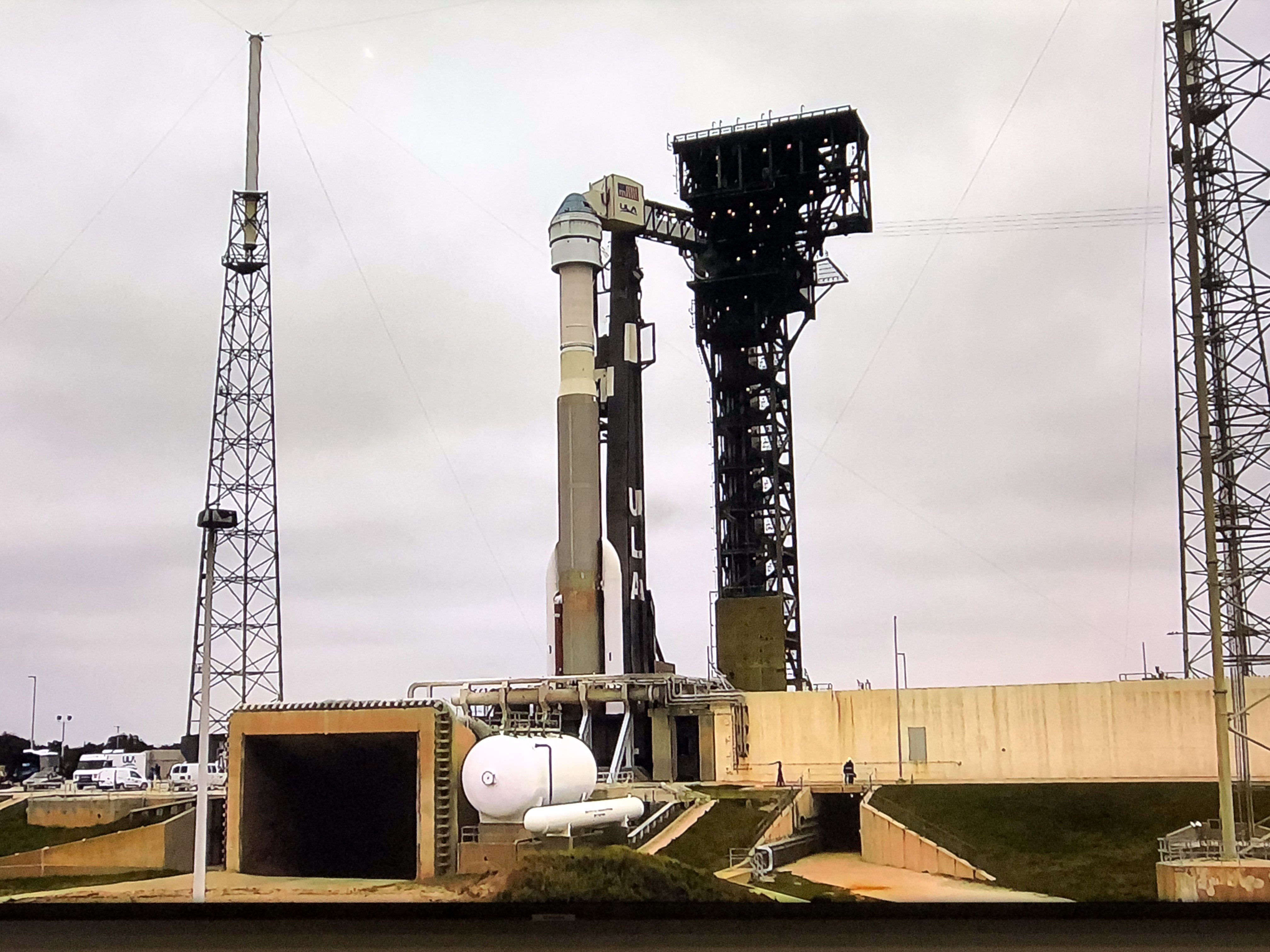Boeing's 1st Starliner Spacecraft to Launch Critical Test Flight Friday. What to Expect
The uncrewed capsule is set to lift off at 6:36 a.m. EDT (1136 GMT)!
CAPE CANAVERAL, Fla. — An uncrewed version of Boeing's Starliner astronaut taxi is on the launchpad here and ready to carry important cargo (and holiday presents) on an uncrewed flight to the International Space Station early Friday (Dec. 20).
Boeing's first CST-100 Starliner, an uncrewed capsule carrying about 595 lbs. (270 kilograms) of cargo, is set to launch from Space Launch Complex 41 at Cape Canaveral Air Force Station at 6:36 a.m. EST (1136 GMT). The craft will launch atop an N22 version of an Atlas V rocket built by the United Launch Alliance. (N22 has no fairing, two solid rocket boosters on the side of the vehicle and two engines on the vehicle's Centaur upper stage.)
You can watch the launch on Space.com, courtesy of NASA TV, beginning at about 5:30 a.m. EST (1030 GMT). NASA will also host a prelaunch briefing with the first astronauts to fly on Starliner today (Dec. 19), beginning at 9:30 a.m. EST (1430 GMT).
Related: Boeing's 1st Starliner Flight Test in Photos
More: How to Watch Boeing's 1st Starliner Test Flight Online

Now, while crewed missions will launch with only about 220 lbs. (about 100 kg) of cargo, to accommodate the weight of the crew, Starliner's payload for the highly anticipated uncrewed test flight — called the Orbital Flight Test (OFT) — will carry a bit more weight.
The cargo aboard OFT will include crew clothing, food, radiation monitoring equipment and an anthropometric test dummy named Rosie the Astronaut, or Rosie for short — named after Rosie the Riveter, who remains an icon after serving as an inspiration for women in the workforce during World War II with her famous tagline, "We Can Do It!"
OFT will precede crewed Starliner missions as part of a larger initiative to advance commercial spaceflight. "We consider this a dress rehearsal for CFT [Commercial Flight Test]," Pat Forrester, the astronaut office chief at NASA's Johnson Space Center, said at the news conference. Boeing and SpaceX both have earned multi-billion dollar contracts to fly astronauts to and from the International Space Station aboard commercial spaceships. While Boeing is working to fly crewed Starliner missions, SpaceX is pushing forward with their Crew Dragon vehicle.
Get the Space.com Newsletter
Breaking space news, the latest updates on rocket launches, skywatching events and more!
Related: How Boeing's Starliner Orbital Flight Test Works
NASA chose to work with Boeing and SpaceX in 2014 as part of an effort to decrease the agency's dependence on Russia's Soyuz spacecraft and begin launching astronauts from American soil again. NASA has not launched humans to space from the U.S. since the shuttle program closed in 2011.
As officials announced at a prelaunch news conference earlier this week (Dec. 17), there is an 80% chance that weather conditions will be acceptable for the launch. Officials will continue to monitor the weather, wind and temperature, Will Ulrich, launch weather officer with the 45th Weather Squadron at Cape Canaveral Air Force Station, said at the news conference. "All things considered, things look pretty good," Ulrich said.
The event also promises to be beautiful because of the launch's time of day. "With a launch at 6:36 right now for Friday morning, that's about 30 minutes before sunrise, which should make for a very picturesque launch," Ulrich said at the news conference. "If I can provide you guys with some clear skies," he joked.
Advancing commercial crew capabilities will also increase the amount of cargo that can be sent to and from the space station, NASA officials said. This will increase not only the scientific equipment and experiments that can be brought to the station but also the capability to return samples to Earth.
While all experiments sent to space have to pass a rigorous screening process before getting the OK to fly, this increased capacity could lead to a wider variety of experiments getting to fly.
"Our expectation is, yeah, this will open up the aperture to things that we could entertain on station that we haven't done before," Ken Shields, chief operating officer for the International Space Station National Lab, told Space.com at a Dec. 18 prelaunch news conference. "From a national lab perspective, we're already seeing some really novel ideas for microgravity research: having Anheuser-Busch on station — very interesting; we flew slime on space for Nickelodeon not long ago for a STEM [science, technology, engineering and mathematics] investigation. Here recently, we flew some industrial hemp. I'm sure we're going to see a lot more interesting, novel uses of the ISS, and we're looking for that!"
- Boeing's CST-100 Starliner Space Capsule (Infographic)
- In Photos: Boeing's Starliner Pad Abort Test Launch
- Boeing's 1st Starliner Space Capsule Rolls Out to Launch Site for Test Flight
Follow Chelsea Gohd on Twitter @chelsea_gohd. Follow us on Twitter @Spacedotcom and on Facebook.

Join our Space Forums to keep talking space on the latest missions, night sky and more! And if you have a news tip, correction or comment, let us know at: community@space.com.

Chelsea “Foxanne” Gohd joined Space.com in 2018 and is now a Senior Writer, writing about everything from climate change to planetary science and human spaceflight in both articles and on-camera in videos. With a degree in Public Health and biological sciences, Chelsea has written and worked for institutions including the American Museum of Natural History, Scientific American, Discover Magazine Blog, Astronomy Magazine and Live Science. When not writing, editing or filming something space-y, Chelsea "Foxanne" Gohd is writing music and performing as Foxanne, even launching a song to space in 2021 with Inspiration4. You can follow her on Twitter @chelsea_gohd and @foxannemusic.









